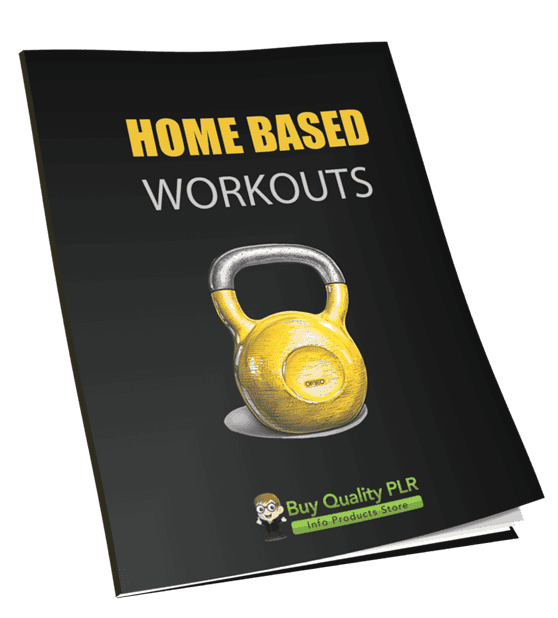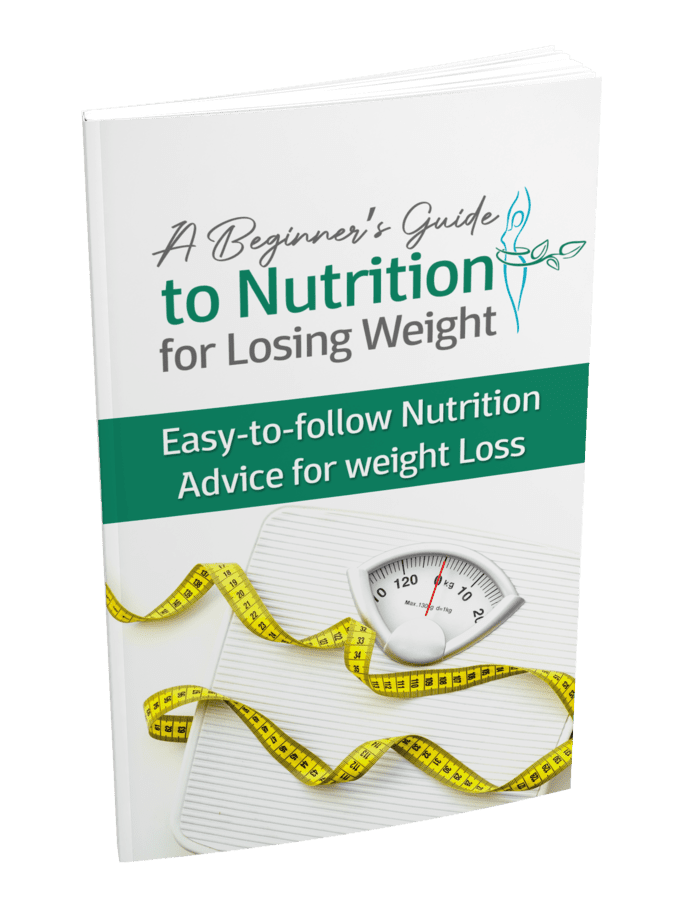
Home Based Workouts PLR Course 24k Words
in Fitness PLR , Fitness PLR Ebooks , PLR Checklists , PLR eBooks , PLR eCourses , PLR List Building Reports , Premium PLR , Premium PLR eBooks , Premium PLR Reports , Premium White Label Brandable PLR Coaching Courses , Private Label Rights Products , Workout PLR , Workout PLR EbooksChoose Your Desired Option(s)
has been added to your cart!
have been added to your cart!
#homeworkouts #fitnessplr #plrcourse #healthandfitness #workoutathome #exerciseguide #plrcontent #stayfit #wellnesscontent
Home Based Workouts PLR Course: Your Complete Done-For-You Home Fitness Program to Sell, Rebrand, and Profit From
Are your customers looking to get fit, stay healthy, and build strength—all from the comfort of home? The Home Based Workouts PLR Course is the ultimate ready-to-sell solution for entrepreneurs, coaches, and online marketers who want a high-demand product in the health and fitness niche.
This comprehensive course covers everything from creating a dedicated workout space at home to tracking progress and staying motivated, making it perfect for beginners, busy professionals, and fitness enthusiasts alike. With full private label rights (PLR), you can rebrand, sell, or repurpose the course however you like—and start earning immediately.
Presenting…
Home Based Workouts PLR Course 24k Words
🌟 Why Home Fitness is the Perfect Niche
The home fitness market has exploded in recent years. People are more conscious than ever about their health and wellbeing, but many struggle to find time or money to go to a gym. By offering a home-based fitness solution, you provide convenience, accessibility, and flexibility—all major selling points.
With this PLR course, you tap into a high-demand niche without spending months creating content yourself. This course is fully structured, professionally written, and ready to sell or bundle into a larger fitness program.
📝 What’s Inside the Home Based Workouts PLR Course?
The course is structured into five comprehensive modules, guiding users step-by-step through creating a sustainable fitness routine that works from home.
Module 1: Setting the Foundation for Home Workouts
Before any fitness journey begins, preparation is key. This module teaches your audience to:
- Create their workout space: A clutter-free, safe area in the home, with simple items like yoga mats, towels, or chairs.
- Gather essential equipment: Dumbbells, resistance bands, water bottles, or household substitutes.
- Set clear fitness goals: Whether it’s weight loss, muscle building, or staying active, setting specific goals is crucial.
- Design a consistent schedule: Short 15-30 minute sessions can produce life-changing results when done consistently.
This foundational module ensures your customers start their journey prepared and confident.
Module 2: Warming Up and Stretching
Warm-ups prevent injuries and prepare the body for exercise. Users will learn:
- Light cardio: Simple movements like jogging in place, dancing, or jumping jacks to get blood flowing.
- Dynamic stretches: Arm circles, hip openers, high knees to improve flexibility and mobility.
- Focus on tight areas: Targeting stiff areas such as hamstrings, shoulders, or lower back with gentle stretches.
- Mindful breathing: 2-3 minutes of deep breathing to mentally prepare for the workout.
By mastering warm-ups and stretches, your customers reduce soreness, enhance performance, and enjoy safer workouts.
Module 3: Full-Body Workouts
This module offers balanced exercises for the entire body, helping users build strength, endurance, and core stability:
- Lower body strength: Squats, lunges, and glute bridges to strengthen legs and tone glutes.
- Upper body strength: Push-ups, wall push-ups, and tricep dips to sculpt arms and shoulders.
- Core workouts: Planks, crunches, and bicycle exercises to strengthen abdominal muscles and support posture.
- Cardio bursts: Short, high-intensity moves like mountain climbers or burpees to increase heart rate and burn calories.
This combination ensures users get a full-body workout without leaving their home.
Module 4: Targeted Workouts
For users who want to focus on specific areas, this module provides:
- Arm exercises: Bicep curls and shoulder presses using light weights or household items.
- Legs and glutes: Side lunges and glute bridges to tone lower body muscles.
- Core strengthening: Bicycle crunches and leg raises for a strong, toned midsection.
- Extra cardio: Skipping rope or marching in place to maintain cardiovascular health.
By including targeted workouts, users can personalize their routines to achieve specific goals, adding variety and motivation to their program.
Module 5: Recovery and Progress Tracking
Sustainable results require recovery, reflection, and adjustments. This module teaches:
- Cool-down stretches: Relax muscles and prevent soreness with slow, deep stretches.
- Hydration and nutrition tips: Drink water and refuel with light snacks like bananas or yogurt.
- Progress tracking: Use a journal or app to log exercises, reps, and energy levels.
- Weekly reflection: Adjust routines for optimal results while keeping workouts fun and rewarding.
Tracking progress ensures users stay motivated, see results, and continue improving.
🎁 Bonus Materials Included
- Home Based Workouts – Checklist (405 Words): A quick reference guide for workouts and equipment.
- Home Based Workouts – FAQs (1,161 Words): Anticipate and answer all common customer questions.
- Home Based Workouts – Pre-Written Sales Page (862 Words): Jumpstart your marketing with a ready-to-use sales page.
These extras make the course easy to sell, implement, and promote.
💡 How You Can Use and Profit From This PLR Course
The Home Based Workouts PLR Course gives you multiple monetization options, including:
- Sell as-is: Rebrand, tweak slightly, and sell directly to your audience.
- Break into smaller reports: Sell focused workout guides for $10-$20 each.
- Bundle with other content: Combine with health, nutrition, or wellness products for $47-$97 packages.
- Membership site content: Offer ongoing access to workouts for recurring revenue.
- Multi-week e-class: Charge $297-$497 for a structured, interactive home fitness course.
- Physical products: Print the content as books, journals, or workout planners to sell at premium prices.
- Multimedia content: Turn the course into audio or video lessons for higher perceived value.
- Lead magnets: Excerpt parts to use as free blog posts, guides, or email opt-ins.
- Flip a site: Build a niche fitness website around this course and sell it for profit.
With these options, the earning potential is limitless. Whether you want passive income or a premium product line, this course has you covered.
📜 PLR License Terms
Permissions:
- Sell, rebrand, or tweak content.
- Create smaller reports, bundles, or courses.
- Convert into audio, video, or membership content.
Restrictions:
- You cannot pass PLR rights to your customers.
- Maximum affiliate commission is 75%.
- The full content cannot be given away for free; excerpts are allowed for marketing purposes.
- You cannot bundle with existing customer orders without additional purchase.
These terms protect your investment while giving you full flexibility to profit.
🔥 Why This PLR Course is a Must-Have
- High Demand: Home fitness is booming—people want results without leaving home.
- Complete Program: Covers setup, workouts, stretching, targeted routines, recovery, and progress tracking.
- Ready-to-Sell: Comes with pre-written sales page, FAQs, and checklist for instant monetization.
- Flexible: Perfect for digital products, memberships, lead magnets, or physical goods.
- Profitable: Multiple ways to sell, bundle, or create premium products.
Take Action Today
Stop wasting months creating content from scratch. The Home Based Workouts PLR Course is fully packaged, professional, and ready for you to sell, rebrand, or monetize. Whether your audience is beginners, fitness enthusiasts, or busy professionals, this course provides everything they need to achieve results from home—and gives you a premium, revenue-generating product in a high-demand niche.
Start profiting today and deliver value that your audience will love!
has been added to your cart!
have been added to your cart!
Here A Sample of Home Based Workouts PLR Course
Module 1: Setting the Foundation for Home Workouts
Step 1: Create Your Workout Space
Your workout environment plays a significant role in setting the tone for your fitness routine. By taking the time to thoughtfully prepare a space, you’ll create a motivating and distraction-free area to focus on your goals. Follow these step-by-step instructions to design an effective and functional workout space, no matter where you are in the world:
Step 1.1: Find the Right Location
- Identify an area in your home that allows for comfortable movement. Look for a space where you can stretch your arms and legs without bumping into furniture or walls.
- Consider a corner of your living room, an open section in your bedroom, or even a covered balcony. If space is limited, a 6-foot by 6-foot area is sufficient for most workouts.
Pro Tip: Select a location with good lighting and ventilation. Natural light can boost your energy levels, while fresh air can improve your performance during workouts.
Step 1.2: Declutter Your Chosen Space
- Clear out any unnecessary items from the area. A clutter-free space helps reduce distractions and allows you to focus on your movements.
- Remove tripping hazards like loose rugs, cords, or toys to ensure safety during high-intensity exercises or stretching routines.
Quick Action: Sweep or vacuum the floor to avoid dust or debris that may cause discomfort while lying down or stretching.
Step 1.3: Lay Down Your Workout Surface
- Use a yoga mat, exercise mat, or a thick towel to create a comfortable base. This protects your joints during floor exercises and provides grip for moves like planks or push-ups.
- If you’re practicing on a hard floor, choose a thicker mat (8mm or more) for extra cushioning. For carpeted areas, a standard 4-6mm mat works well to prevent slipping.
Optional Add-On: Place a small rug underneath the mat if you need additional stability, especially on slippery tiles or hardwood floors.
Step 1.4: Personalize Your Setup
- Keep essentials like a water bottle, small towel, and any workout equipment (resistance bands, dumbbells, etc.) within arm’s reach. This saves time during your session and keeps you focused.
- If possible, set up near an outlet to plug in devices like a speaker or phone charger if you use fitness apps or listen to music.
- Consider adding a mirror to check your form during exercises, or position your space near a screen if you follow workout videos.
Tip for Small Spaces: Store your equipment in a basket or small box that can easily be tucked away when not in use. This keeps your space tidy and functional.
Step 1.5: Test Your Setup
- Stand in the center of your workout space and test a few basic movements like arm circles, lunges, or jumping jacks. Ensure there’s enough room to move freely without obstruction.
- If you’re practicing on a balcony or near furniture, be mindful of nearby edges and sharp corners. Adjust your setup as needed to prioritize safety.
Global Reminder: For those in apartment buildings or multi-story homes, consider the impact of your movements on neighbors below. Use noise-dampening mats to minimize sound during jumping exercises.
Step 1.6: Create a Motivational Atmosphere
- Enhance your space with elements that inspire you. Hang a small poster with motivational quotes, light a scented candle for yoga sessions, or play energizing music during cardio workouts.
- If natural light isn’t available, invest in a bright, adjustable lamp to keep your space well-lit and uplifting.
By following these steps, you’ll have a dedicated workout space that is safe, functional, and tailored to your needs. Taking this simple yet impactful action will make it easier to stay consistent and committed to your fitness journey. Once your space is ready, you’re all set to dive into the rest of your workout plan!
Step 2: Gather Your Equipment
The right equipment can make your workouts more effective and enjoyable, but you don’t need an expensive setup to get started. This step focuses on assembling versatile, budget-friendly tools that suit a variety of exercises. Whether you’re creating a new home gym or enhancing an existing space, follow these detailed instructions to prepare the essentials.
Step 2.1: Start with the Basics
- Yoga Mat: Invest in a quality yoga or exercise mat. This will provide comfort and support during stretches, strength training, or floor-based exercises.
- Look for a non-slip surface for stability during high-intensity workouts.
- Choose a thickness that matches your needs: 4mm for balance-focused workouts, or 8mm+ for extra cushioning on hard floors.
- Water Bottle: Staying hydrated is key during workouts. Keep a reusable water bottle within reach to avoid interruptions.
- Opt for an insulated bottle to keep water cool.
- If you’re tracking hydration, choose one with measurement markings.
- Dumbbells or Alternatives: Start with a light to medium pair of dumbbells (1-3 kg or 2-7 lbs) to perform basic strength-training exercises.
- If dumbbells aren’t available, use household items like filled water bottles, canned goods, or bags of rice.
- Make sure the alternative weights are evenly balanced for safe use.
Step 2.2: Explore Versatile, Low-Cost Options
If you’re looking to expand your equipment, consider these affordable and multi-purpose tools:
- Resistance Bands:
- These are lightweight, portable, and can substitute for weights in many exercises.
- Choose a set with varying resistance levels (light, medium, heavy) to accommodate your fitness progression.
- Jump Rope:
- Perfect for cardio workouts and improving coordination.
- Ensure you have enough ceiling clearance and a non-slip surface to jump safely.
- Towels for Sliders:
- Use small towels or cloths as sliders on hardwood or tile floors for moves like mountain climbers or lunges.
- For carpeted surfaces, substitute with sturdy paper plates or furniture sliders.
Step 2.3: Adapt Equipment for Small Spaces
If space is limited or you’re working with a modest budget, focus on tools that are compact and dual-purpose:
- Chairs or Stools:
- Use a sturdy chair for tricep dips, step-ups, or balance support during stretches.
- Test the chair’s stability on your workout surface before use.
- Backpacks or Bags:
- Fill a backpack with books or water bottles to create a makeshift weight for squats, lunges, or rows.
- Adjust the load to suit your strength level.
- Foam Roller:
- If available, a foam roller doubles as a recovery tool and can be used for core exercises.
- Select a compact size for easy storage.
Step 2.4: Test Your Equipment for Safety
Before starting your workout, ensure all equipment is in good condition and safe to use:
- Inspect your dumbbells or alternatives for cracks, leaks, or loose parts.
- Check that your yoga mat grips the floor securely, especially during dynamic movements.
- Test resistance bands for any signs of wear or tears to prevent snapping during use.
Global Consideration: If you’re borrowing items from around your home, confirm their weight and durability. For example, avoid using glass bottles, as they could break if dropped.
Step 2.5: Organize Your Equipment for Easy Access
- Dedicate a small storage area in your workout space to keep equipment organized and accessible.
- Use a basket, crate, or shelf to store mats, bands, and small weights.
- Hang resistance bands or jump ropes on hooks to save space.
- Avoid overcrowding your workout zone with too much equipment. Instead, focus on using tools that complement your routine.
Step 2.6: Upgrade Over Time
As your fitness journey progresses, you may wish to invest in additional equipment to expand your routine:
- Adjustable dumbbells for a wider range of weights.
- A kettlebell for functional training exercises.
- An exercise bench or stability ball for variety in strength and core workouts.
By starting with these essentials, you’ll have everything you need for an effective home workout routine. Remember, it’s not about how much equipment you have—it’s about how you use it. Once your gear is ready, you’re well on your way to a productive and enjoyable fitness experience.
Step 3: Set Your Fitness Goals
Setting clear and actionable fitness goals is the foundation of a successful workout routine. Goals not only guide your efforts but also keep you motivated and accountable. Whether you’re aiming for weight loss, increased strength, enhanced flexibility, or general fitness, this step-by-step process will help you establish meaningful objectives tailored to your needs.
Step 3.1: Identify Your Purpose
Begin by reflecting on why you want to work out. A clear sense of purpose will shape your goals and keep you committed. Ask yourself:
- Are you trying to improve your overall health?
- Do you want to increase your energy levels or feel more confident in your body?
- Are you preparing for a specific event, such as a wedding, vacation, or athletic competition?
Action Tip: Write down your “why” in a fitness journal or on a piece of paper. For example: “I want to feel stronger and more energetic to keep up with my kids,” or “I want to lose weight to improve my health.”
Step 3.2: Be Specific and Measurable
Vague goals like “get fit” or “lose weight” can be difficult to track. Instead, create SMART goals:
- Specific: Clearly define what you want to achieve.
- Measurable: Include a number or metric to track your progress.
- Achievable: Set a goal that is realistic within your timeframe and current fitness level.
- Relevant: Ensure your goal aligns with your personal priorities and values.
- Time-bound: Set a deadline to help you stay focused.
Example:
- General Goal: “I want to get stronger.”
- SMART Goal: “I want to do 20 push-ups without stopping in 4 weeks.”
Global Consideration: Use universal units when creating your goals. For example, measure weight in kilograms/pounds or distances in kilometers/miles depending on your preference.
Step 3.3: Break Down Long-Term Goals into Short-Term Milestones
Long-term goals can feel overwhelming, so break them into smaller, actionable steps:
- Long-term goal: Lose 10 kilograms (22 pounds) in 6 months.
- Short-term milestones:
- Week 4: Lose 2 kilograms (4.4 pounds).
- Week 8: Increase workout duration to 45 minutes, 5 times a week.
- Week 12: Run 2 kilometers (1.2 miles) without stopping.
Each milestone should serve as a checkpoint, providing a sense of accomplishment and motivating you to move forward.
Step 3.4: Balance Realism with Ambition
While it’s important to challenge yourself, your goals should also align with your current fitness level and lifestyle. Unrealistic expectations can lead to burnout or discouragement.
- Assess your starting point:
- How active are you currently?
- Are there any health concerns or limitations you need to consider?
- What is your current strength, endurance, or flexibility level?
- Adjust your goals based on your schedule and responsibilities.
Example for Beginners: Instead of aiming for an hour-long workout every day, start with 20 minutes, 3-4 times a week, and gradually increase as your fitness improves.
Step 3.5: Write Down and Display Your Goals
Commit your goals to writing and place them somewhere visible to remind yourself daily. This could be:
- A note on your fridge or bathroom mirror.
- A page in your fitness journal.
- A digital reminder on your phone or fitness app.
Action Tip: Phrase your goals positively. For instance, instead of saying “Don’t skip workouts,” write “I will complete 4 workouts this week.” Positive language reinforces a can-do mindset.
Step 3.6: Track and Celebrate Progress
Create a system for monitoring your progress. Tracking allows you to see how far you’ve come and make adjustments if needed.
- Use a fitness app, journal, or spreadsheet to record:
- Weight changes.
- Repetitions and sets completed.
- Workout durations or distances covered.
- Flexibility improvements, such as being able to touch your toes.
- Celebrate small wins to stay motivated. For example, treat yourself to new workout gear or a healthy snack after hitting a milestone.
Step 3.7: Adjust Goals as Needed
Your goals should evolve with you. If you achieve a goal early, set a new one. If you encounter challenges, adjust your timeline or approach without feeling discouraged.
- Example of adjusting a goal:
- Original: “Run 5 kilometers (3 miles) in 6 weeks.”
- Adjusted: “Run 3 kilometers (1.8 miles) in 6 weeks, then build up to 5 kilometers in 10 weeks.”
By clearly defining and documenting your fitness goals, you create a roadmap to success. Goals provide focus, motivation, and measurable benchmarks, ensuring that every workout moves you closer to your aspirations. Take the time to thoughtfully set your objectives, and you’ll be ready to tackle the next steps in your fitness journey!
Step 4: Create a Schedule
Consistency is the cornerstone of a successful fitness routine. Without a clear schedule, it’s easy to lose momentum or skip workouts altogether. This step will guide you through the process of crafting a personalized workout plan that fits seamlessly into your daily life. A well-structured schedule not only ensures you stay on track but also helps you build discipline and integrate fitness as a lasting habit.
Step 4.1: Assess Your Current Routine
Before setting a workout schedule, evaluate your existing commitments to identify the most suitable time slots for exercise.
- Identify Available Time: Look at your daily and weekly routines. Consider when you’re typically free and your energy levels at different times of the day.
- Morning workouts are great if you feel energized early and want to start your day with a positive mindset.
- Evening workouts might suit you if your mornings are busy or you need to de-stress after work.
- Factor in Your Responsibilities:
- Consider work hours, family commitments, meal times, and other non-negotiable activities.
- If your schedule varies daily, plan workouts for the most consistent part of your day.
Action Tip: Use a digital calendar, planner, or journal to block off specific time slots for workouts.
Step 4.2: Choose a Realistic Duration
Start with a manageable timeframe to ensure you can stick to your plan. For beginners, shorter sessions can still be effective.
- 15-30 Minutes to Start:
- If you’re just beginning, aim for 15-20 minutes per session. This duration allows you to build the habit without feeling overwhelmed.
- As you grow more confident and accustomed to regular workouts, gradually increase to 30 minutes or more.
- Break Workouts Into Segments:
- If a continuous block of time is hard to find, consider splitting your workout into two 10-15 minute sessions during the day.
- For example, do strength training in the morning and stretching in the evening.
Step 4.3: Establish Consistent Days
Choose specific days for your workouts to create a routine. Consistency builds habit and ensures you make steady progress.
- Decide on Frequency: Start with 3-4 sessions per week, leaving rest or recovery days in between. For example:
- Monday, Wednesday, Friday: Strength or cardio.
- Saturday: Yoga or flexibility.
- Include Rest Days: Recovery is as important as exercise. Schedule at least 1-2 rest days per week to allow your muscles to heal and prevent burnout.
- Be Flexible: If life gets in the way, shift your workout to a different time or day. Consistency over the long term is more important than rigid perfection.
Step 4.4: Adapt to Your Energy Levels
Match the intensity of your workouts to the time of day when you feel most energized.
- Morning Workouts:
- Benefit: You’re likely to be more consistent as there are fewer distractions early in the day.
- Suitable Activities: Cardio, strength training, or quick HIIT sessions.
- Midday Workouts:
- Benefit: A great way to break up a long workday and recharge your energy.
- Suitable Activities: A 20-minute circuit or stretching routine.
- Evening Workouts:
- Benefit: Helps relieve stress and unwind after work.
- Suitable Activities: Yoga, flexibility, or low-impact exercises.
Action Tip: Experiment with different times to find what works best for your body and lifestyle.
Step 4.5: Build Accountability and Motivation
To maintain your schedule, add layers of accountability to stay motivated.
- Set Alarms or Reminders: Use your phone or fitness apps to remind you of workout times.
- Share Your Plan: Tell a friend, family member, or workout buddy about your schedule. Having someone to check in with keeps you accountable.
- Join a Community: Participate in online fitness groups or virtual classes for added motivation.
Step 4.6: Track and Adjust Your Schedule
Your schedule should evolve as your fitness level, lifestyle, or goals change.
- Track Your Consistency: Use a fitness journal, app, or simple calendar to mark completed workouts. This visual progress is highly motivating.
- Review and Adjust Weekly: Reflect on what worked and what didn’t. If mornings felt rushed, try shifting to afternoons.
- Scale Your Routine Gradually: As you grow stronger, increase workout durations or add another day to your schedule.
Step 4.7: Prepare for Success
To ensure you stick to your schedule, set yourself up for success the night before:
- Lay out your workout clothes and shoes.
- Place your yoga mat, dumbbells, or other equipment in your designated space.
- Pre-fill your water bottle to save time.
By creating a schedule that works for your lifestyle and energy levels, you’re building a framework for consistency and long-term success. Remember, even 15 minutes of focused effort each day can lead to meaningful progress over time. Plan wisely, stay flexible, and keep showing up for yourself—you’re building a habit that lasts!
We’re also giving these extra bonuses
Home Based Workouts – Checklist
Home Based Workouts – FAQs

Home Based Workouts – Salespage Content

Package Details:
Word Count: 22 212 Words
Number of Pages: 88
Home Based Workouts – Bonus Content
Checklist
Word Count: 405 words
FAQs
Word Count: 1161 words
Salespage Content
Word Count: 862 words
Total Word Count: 24 640 Words
Your PLR License Terms
PERMISSIONS: What Can You Do With These Materials?
Sell the content basically as it is (with some minor tweaks to make it “yours”).
If you are going to claim copyright to anything created with this content, then you must substantially change at 75% of the content to distinguish yourself from other licensees.
Break up the content into small portions to sell as individual reports for $10-$20 each.
Bundle the content with other existing content to create larger products for $47-$97 each.
Setup your own membership site with the content and generate monthly residual payments!
Take the content and convert it into a multiple-week “eclass” that you charge $297-$497 to access!
Use the content to create a “physical” product that you sell for premium prices!
Convert it to audios, videos, membership site content and more.
Excerpt and / or edit portions of the content to give away for free as blog posts, reports, etc. to use as lead magnets, incentives and more!
Create your own original product from it, set it up at a site and “flip” the site for megabucks!
RESTRICTIONS: What Can’t You Do With These Materials?
To protect the value of these products, you may not pass on the rights to your customers. This means that your customers may not have PLR rights or reprint / resell rights passed on to them.
You may not pass on any kind of licensing (PLR, reprint / resell, etc.) to ANY offer created from ANY PORTION OF this content that would allow additional people to sell or give away any portion of the content contained in this package.
You may not offer 100% commission to affiliates selling your version / copy of this product. The maximum affiliate commission you may pay out for offers created that include parts of this content is 75%.
You are not permitted to give the complete materials away in their current state for free – they must be sold. They must be excerpted and / or edited to be given away, unless otherwise noted. Example: You ARE permitted to excerpt portions of content for blog posts, lead magnets, etc.
You may not add this content to any part of an existing customer order that would not require them to make an additional purchase. (IE You cannot add it to a package, membership site, etc. that customers have ALREADY paid for.)
Share Now!













